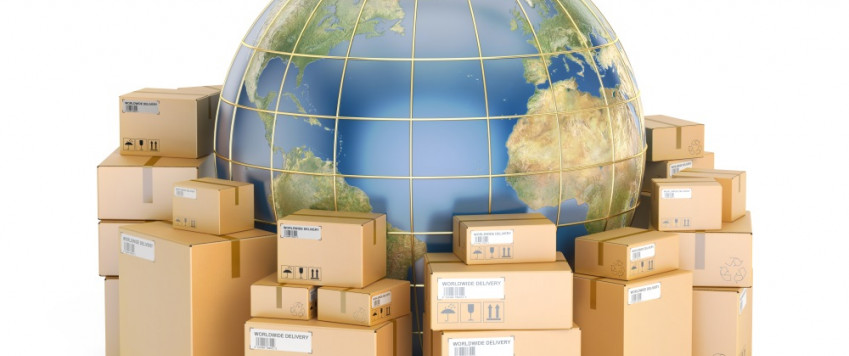Successful year for Latvian exporters

Geopolitical risks, having adversely affected producer and consumer confidence last year and early this year and also prevented recovery of investment activity, have gradually lost the sharpness of their impact. This happens as both consumers and businesses, living in such political uncertainty for a long time, have adjusted their operational strategy and have created a certain kind of immunity against a negative external background.
The last two months have been excellent for exports of goods. In September, the value of exports of goods reached a record high in Latvia's foreign trade history. In October, exports of goods retained their growth momentum posting a new monthly record high. Moreover, export growth of almost all sectors contributed to the good performance.
The first ten months of the year saw a 9.6% year-on-year rise in the value of exports of goods, maintaining positive annual growth in almost all groups of goods. The largest positive contributors were food products, including beverages, articles of base metals, machinery and electrical equipment, products of wood, animal products, and products of the chemical industry (including pharmaceutical products).
The persisting uncertainty associated with Brexit notwithstanding, exports of goods to the UK continued on an upward trend. The decrease in exports of products of wood and machinery and electrical equipment to the UK was offset by an increase in exports of cereals, fish products, articles of cosmetics and toiletries, pharmaceutical products, articles of base metals, transport vehicles and their parts, as well as furniture and toys.
Also, despite the persisting sanctions with respect to food product exports, exports of other commodity groups (machinery and electrical equipment, pharmaceutical products, textiles etc.) to Russia have seen pronounced growth.
In the breakdown by country, the rise in exports of goods was on account of both the traditional partner markets and more distant markets. In the first ten months, exports of goods to European Union (EU) countries have increased by 8.9% in annual terms. Exports to Asian countries have seen a very similar growth, i.e. 8.8%, while exports to America have surged by 67%.
This year exports of goods have posted an increase both in real and nominal terms. In the third quarter, re-export growth was more pronounced than in the previous quarter; but it is rather the exports manufactured domestically than re-exports that ensured export growth both in the third quarter and in annual terms.
This year the increase in imports of goods (16.0% in ten months) has exceeded that of exports. The trade deficit is more associated with investment activities. On the one hand, they increase the trade deficit of goods, but on the other hand, they provide an opportunity to increase the future competitiveness of the manufacturing and services sectors and export growth. Investment dynamics is positively affected by both the improving external and domestic demand, as well as the availability of the EU structural funds. Given the high level of capacity utilisation in manufacturing companies, relatively rapid investment dynamics can also be expected in the future. At the same time, the robust domestic consumption supports growth in consumer goods imports.
For many companies this will be a year of success. Significant investments were made in production equipment, infrastructure and information technologies; diverse new products were launched and new export markets were penetrated.
For example, JSC Dobeles dzirnavnieks, a major grain processing company in the Baltic States exporting its output to 25 countries (its main export markets are the Scandinavian countries, Germany, Poland, Egypt, the Netherlands, etc.), has invested 1.5 million euro to boost the capacity of its cereal flake production facility. In view of the fact that the capacity of the grain processing unit will increase, it is good news to the local farmers as well.
Aloja Starkelsen, a potato starch manufacturer, has also contributed to creating innovative products by launching production of organic grey pea flour this year and in the future plans to reach amounts similar to those of potato starch they produce. Customers in the US and Europe have already shown interest in the new product as currently Aloja Starkelsen is the only company in the world offering grey pea protein.
Latvian exporters are also capable of penetrating really far-away markets. SIA Pure Chocolate, a manufacturer of chocolate truffles from Latvia, exports its products to more than 20 countries, including the US and Korea. Grindeks, a leading pharmaceutical company, has also been successful in expanding its export markets. Its major export markets include not only EU countries, but also Canada, Australia and Japan.
Positive contribution to the food industry development is also made by the company Orkla which exports its output to 30 countries. In the next three years, it plans to invest up to 20 million euro in the construction of the new production unit "Laima" in Ādaži and future development.
Latvian companies and exporters are active in their businesses. This is confirmed by the competition "Export and Innovation Awards 2017" where 107 applications from companies from all Latvia were submitted. The list of the winners and nominees congratulated in the awarding ceremony on 7 December 2017 confirms the fact that Latvian businesses are becoming more technologically advanced and the range of the products produced and services rendered by them is expanding.
Textual error
«… …»


